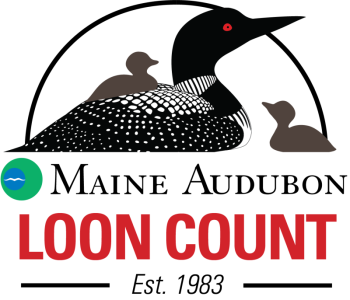Maine Audubon’s annual loon count set for July 20
“Nothing symbolizes summer in Maine quite like the haunting wail of a loon,” said Maine Audubon, in a news release. “The urge to help them and make sure that future generations will be able to hear that call is what has galvanized people to turn out, year after year, early on a Saturday morning in July, to count loons and aid in a long-running population study.”
Maine Audubon’s annual loon count will take place Saturday, July 20, from 7 to 7:30 a.m. As has happened on each third Saturday of July since 1984, a corps of dedicated volunteers will venture out on lakes and ponds across the state to search for, and count, Common Loons.
Maine Audubon uses the statewide snapshot to estimate the annual population and track population trends. The information helps biologists, state officials, and Maine lake users understand more about the loons’ status and the health of Maine lakes. The data is also used to determine where struggling nesting loons may need help, and how to reduce loon disturbance and mortality.
Last year, more than 1500 volunteer loon counters headed out to 374 lakes, allowing Maine Audubon to calculate a population estimate for southern Maine and keep an eye on trends over time. Based on calculations, Maine Audubon projected a population of 2,892 adults and 411 chicks for the southern half of Maine. Of the 374 lakes counted in Maine, 69 of those were north of the 45th parallel and on those lakes volunteers tallied 522 adults and 31 chicks. This number cannot be used as a straight comparison to the south but it can serve as a reference for loon numbers and northern coverage moving forward.
Maine has the largest population of loons in the eastern United States, which makes the breeding success of loons here critical to the population at large, according to Audubon. But plenty of threats to loons exist. Trauma, especially from boat strikes (when a boat collides with a loon), is a leading cause of adult loon deaths in Maine, as is lead poisoning from ingesting lost and discarded lead tackle.
Loon counters also continue to report loon nests being flooded and eggs washing out of the nest by boat wakes. Most loons nest within a foot of the water’s edge, so they are especially vulnerable to washout from large waves. All motor boats on Maine lakes are required to travel at no-wake speeds when they are within 200 feet of shore or islands. Boats that facilitate wake surfing create even larger waves and can impact loon nests even when operating as far as 500-600 feet offshore. Earlier this year, a new law (LD 2284) was implemented specifically to address wakesurfing activity. It states that a person is prohibited “from operating a motorboat in less than 15 feet of water or within 300 feet of the shoreline when the motorboat is engaged in a wakesurfing activity.”
For more information about the annual count or the Maine Loon Project, or to volunteer, contact conserve@maineaudubon.org or visit maineaudubon.org/loons.


























